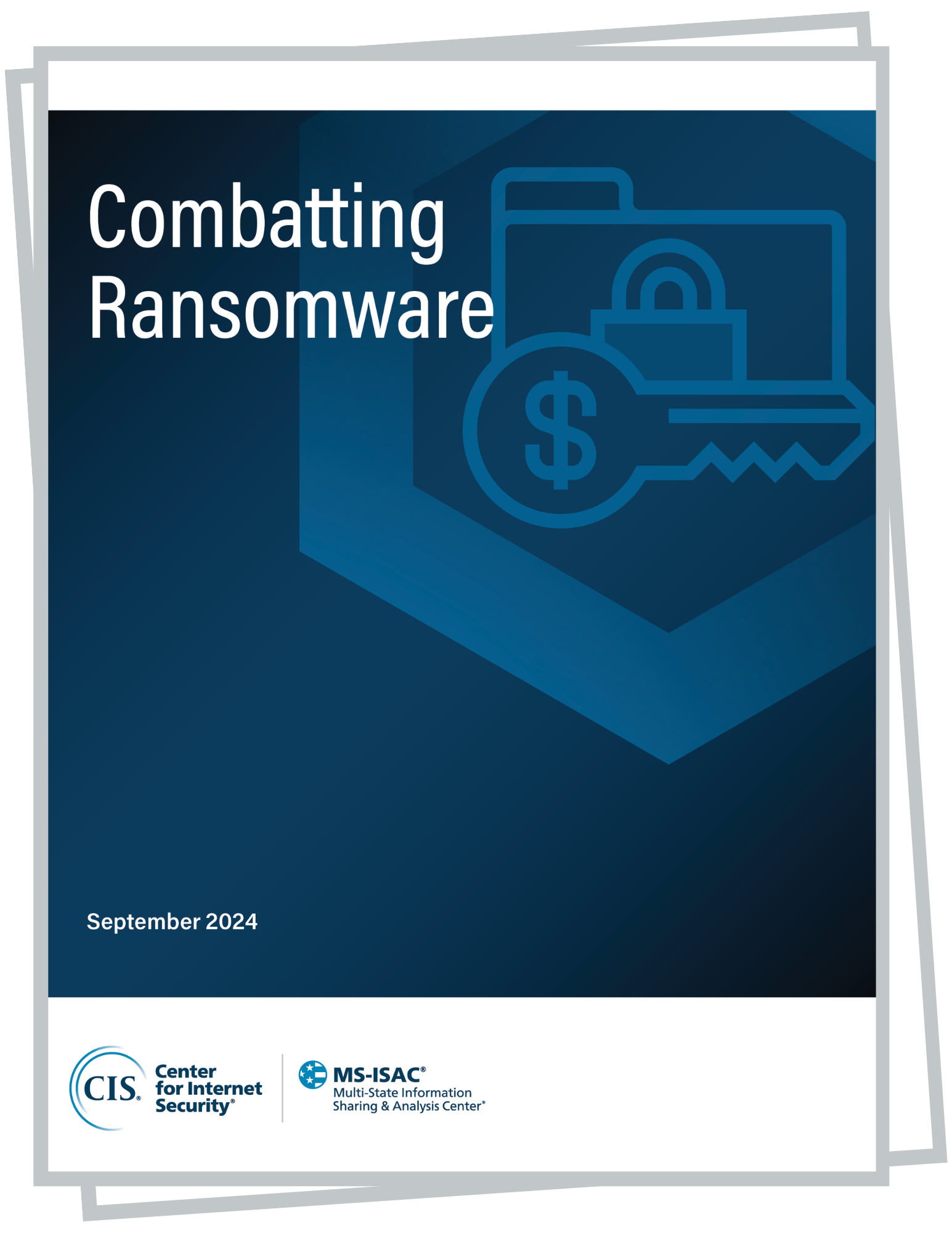Combatting Ransomware
Published on October 18, 2024

This guide provides comprehensive information on ransomware mitigation strategies, incorporating activities from the National Institute of Standards & Technology (NIST) Cybersecurity Framework (CSF) and NIST SP 800-53. It is designed to help organizations enhance their cybersecurity posture and effectively combat ransomware threats.
The information presented here is based on recommendations from the Multi-State Information Sharing & Analysis Center® (MS-ISAC®) Metrics Working Group, which advises the federally funded Nationwide Cybersecurity Review (NCSR) assessment program.
Understanding Ransomware
What Is Ransomware?
Ransomware is a type of malicious software (malware) that restricts access to a computer system or files typically through encryption. The attacker then demands a ransom payment to restore access. This can result in significant productivity loss, financial damage, and reputational harm to an organization.
How Does Ransomware Spread?
Common vectors for ransomware include:
Email (Phishing)
- Users clicking on malicious links or attachments in spam emails
- Users divulging personal information through deceptive emails
Compromised Passwords/Credentials
- Weak passwords
- Compromised user authentication
- Credential abuse
Vulnerabilities
- Unpatched software or systems
- “Drive-By downloading” or malicious apps from app stores
Remote Desktop Protocol (RDP)
- Unsecured remote access points
Review our guide to learn how to prevent, prepare for, and respond to a ransomware attack.
As of June 23, 2025, the MS-ISAC has introduced a fee-based membership. Any potential reference to no-cost MS-ISAC services no longer applies.